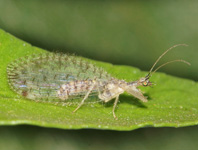Abstract
Despite extensive taxonomic work on the Neotropical fauna of the spider genus Micrathena Sundevall, for 27 out of 117 (23%) species only the female morphology has been described, and some of the previously hypothesized male-female matches have been proven erroneous. This work provides new insight about sex matching in two species: Micrathena ruschii (Mello-Leitão, 1945) and Micrathena lata Chickering, 1960. For Micrathena ruschii, the male previously hypothesized to belong to this species was collected with females in Itatiaia; we here present morphologically different males, also collected with females, in Macaé, both in Rio de Janeiro, Brazil. Through a DNA barcoding approach, we present molecular evidence indicating conspecificity of M. ruschii females with the males collected in Macaé, proving the male from Itatiaia to be a misidentification. Therefore, a description of the correct male of Micrathena ruschii is herein provided. The male previously identified as M. ruschii probably represents an undescribed species but is not named here due to scarcity of material. We also describe for the first time the male of Micrathena lata based on one specimen collected in Misiones, Argentina. This male specimen belongs to the militaris species group, where M. lata is the only species from the Atlantic Forest previously only known by females. In addition, we detect an intersexual specimen of Micrathena ruschii, revealing the first case of intersexuality for the genus.
References
Alvarenga, A.S., Pérez-González, A. & Baptista, R.L.C. (2011) Description of the male of the “spiny spider” Micrathena cicuta (Araneae, Araneidae). In: Florez, E. & Perafán, C. (Eds.), Memorias y resúmenes III Congreso Latinoamericano de Aracnología, Colombia, Montenegro, 2011, pp. 211.
Argañaraz, C.I. & Rubio, G.D. (2011) The spider Micrathena shealsi Chickering, 1960 (Araneae: Araneidae): description of the male, with new data on its geographic distribution. Zootaxa, 3104 (1), 52–58.
https://doi.org/10.11646/zootaxa.3104.1.4
Chickering, A.M. (1960) Three new species of Micrathena (Araneae, Argiopidae) from South America. Breviora, 121, 1–11.
Folmer, O., Black, M., Hoeh, W., Lutz, R. & Vrijenhoek, R. (1994) DNA primers for amplification of mitochondrial cytochrome c oxidase subunit I from diverse metazoan invertebrates. Molecular Marine Biology and Biotechnology, 3, 294–299.
Gonzaga, M.O. & Santos, A.J. (2004) A new species and a new synonymy in the spiny orb-weaver spider genus Micrathena (Araneae, Araneidae). Journal of Arachnology, 32, 332–335.
https://doi.org/10.1636/H03-35
Kaston, B.J. (1961) Spider gynandromorphs and intersexes. Journal of the New York Entomological Society, 69 (4), 177–190.
Kumar, S., Stecher, G., Li, M., Knyaz, C. & Tamura, K. (2018) MEGA X: Molecular Evolutionary Genetics Analysis across computing platforms. Molecular Biology and Evolution, 35, 1547–1549.
https://doi.org/10.1093/molbev/msy096
Levi, H.W. (1985) The spiny orb-weaver genera Micrathena and Chaetacis (Araneae: Araneidae). Bulletin of the Museum of Comparative Zoology, Harvard University, 150, 429–618.
Magalhães, I.L.F. & Santos, A.J. (2011) Two new species and taxonomic notes on the Neotropical spiny orb-weaving spiders Micrathena and Chaetacis (Araneae: Araneidae), with remarks on the development of Micrathena excavata. Zootaxa, 2983, 39–56.
https://doi.org/10.11646/zootaxa.2983.1.3
Magalhães, I.L.F. & Santos, A.J. (2012) Phylogenetic analysis of Micrathena and Chaetacis spiders (Araneae: Araneidae) reveals multiple origins of extreme sexual size dimorphism and long abdominal spines. Zoological Journal of the Linnean Society, 166 (1), 14–53.
https://doi.org/10.1111/j.1096-3642.2012.00831.x
Magalhaes, I.L.F., Martins, P.H., Nogueira, A.A. & Santos, A.J. (2017) Finding hot singles: matching males to females in dimorphic spiders (Araneidae: Micrathena) using phylogenetic placement and DNA barcoding. Invertebrate Systematics, 31 (1), 8–36.
https://doi.org/10.1071/IS15062
Masta, S.E., Longhorn, S.J. & McCall, A.D. (2008) Chelicerate Primers. An Online Primer Resource for Chelicerate Mitogenomics. Available from: http://web.pdx.edu/~smasta/primer_pages/Primer_front.html (accessed 1 April 2020)
McHugh, A., Yablonsky, C., Binford, G. & Agnarsson, I. (2014) Molecular phylogenetics of Caribbean Micrathena (Araneae, Araneidae) suggests multiple colonisation events and single island endemism. Invertebrate Systematics, 28, 337–349.
https://doi.org/10.1071/IS13051
Mello-Leitão, C.F. (1945) Três novas espécies de Gasteracanthinae e notas sôbre a subfamília. Anais da Academia Brasileira de Ciências, 17, 261–267.
Quiñones-Lebrón, S.G., Kralj-Fišer, S., Gregorič, M., Lokovšek, T., Čandek, K., Haddad, C.R. & Kuntner, M. (2016) Potential costs of heterospecific sexual interactions in golden orbweb spiders (Nephila spp.). Scientific reports, 6, 36908.
https://doi.org/10.1038/srep36908
Rabaud, E. & Millot, J. (1933) Anomalies sexuelles chez les araignées. Archives de zoologie expérimentale et générale, 75, 267–281.
Roberts, M. & Parker, J. (1973) Gynandry and intersexuality in spiders. Bulletin of the British Arachnological Society, 2, 177–183.
World Spider Catalog (2020) World Spider Catalog. Version 20.5. Natural History Museum Bern. Available from: http://wsc.nmbe.ch (accessed 1 April 2020)


